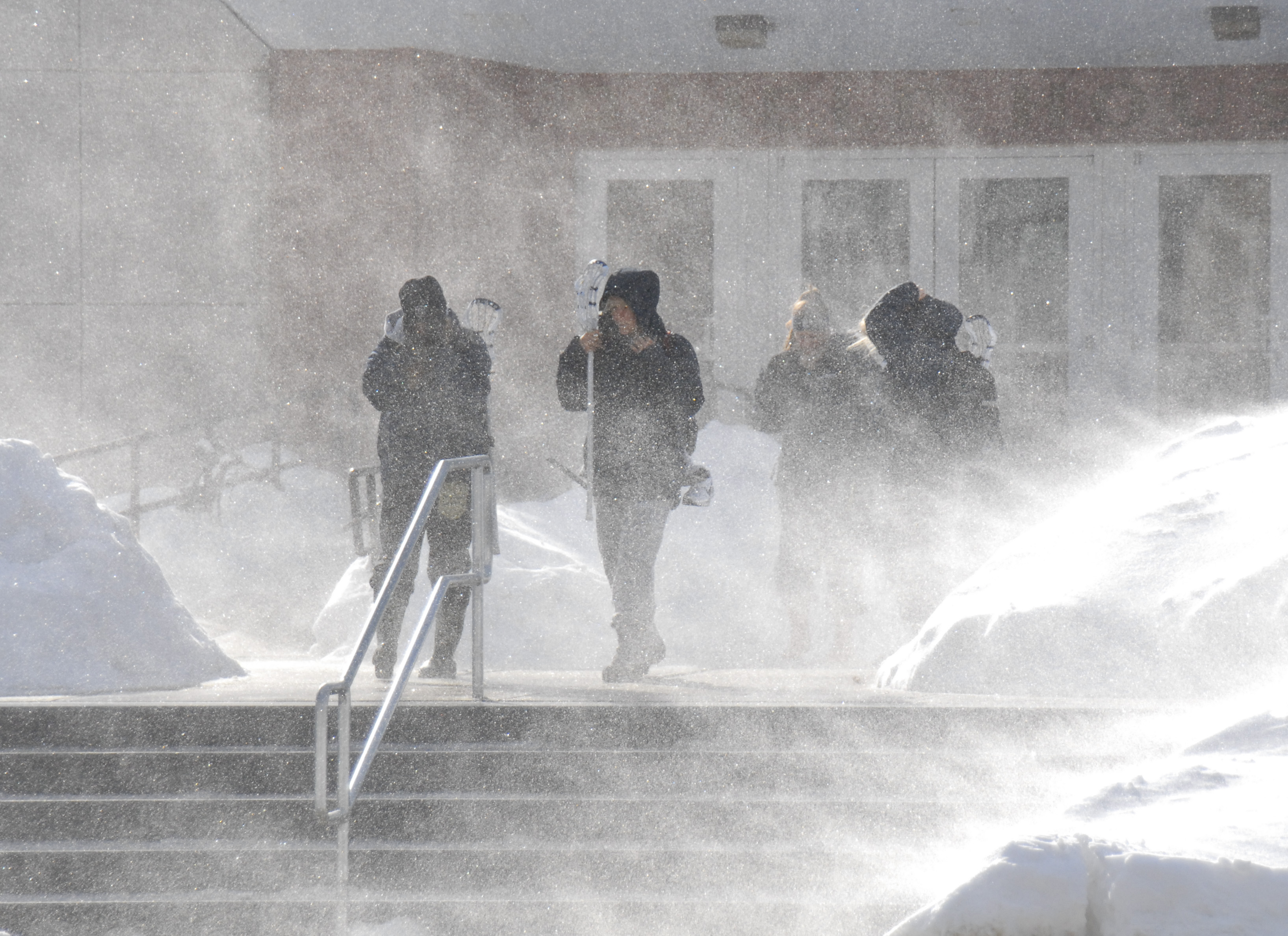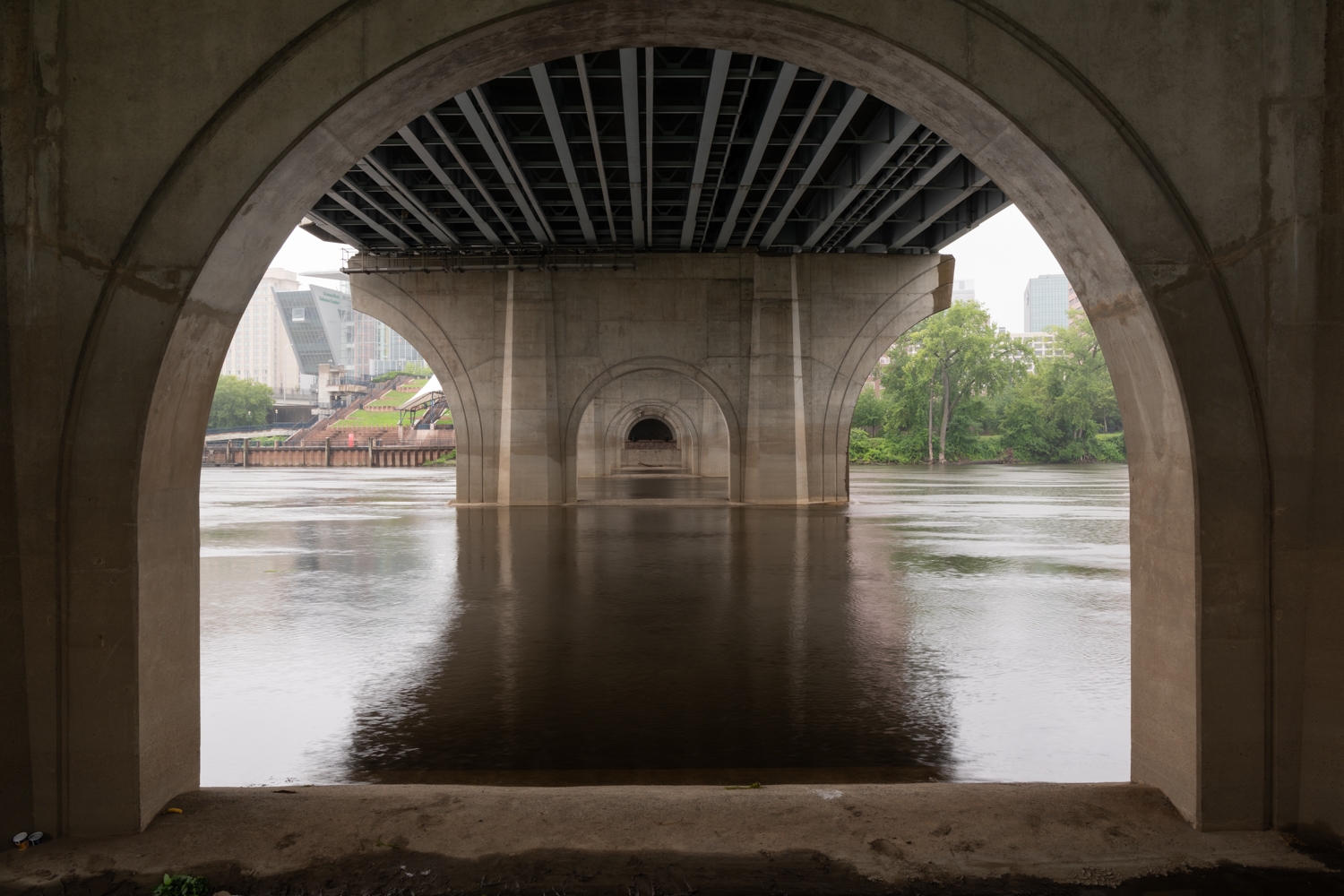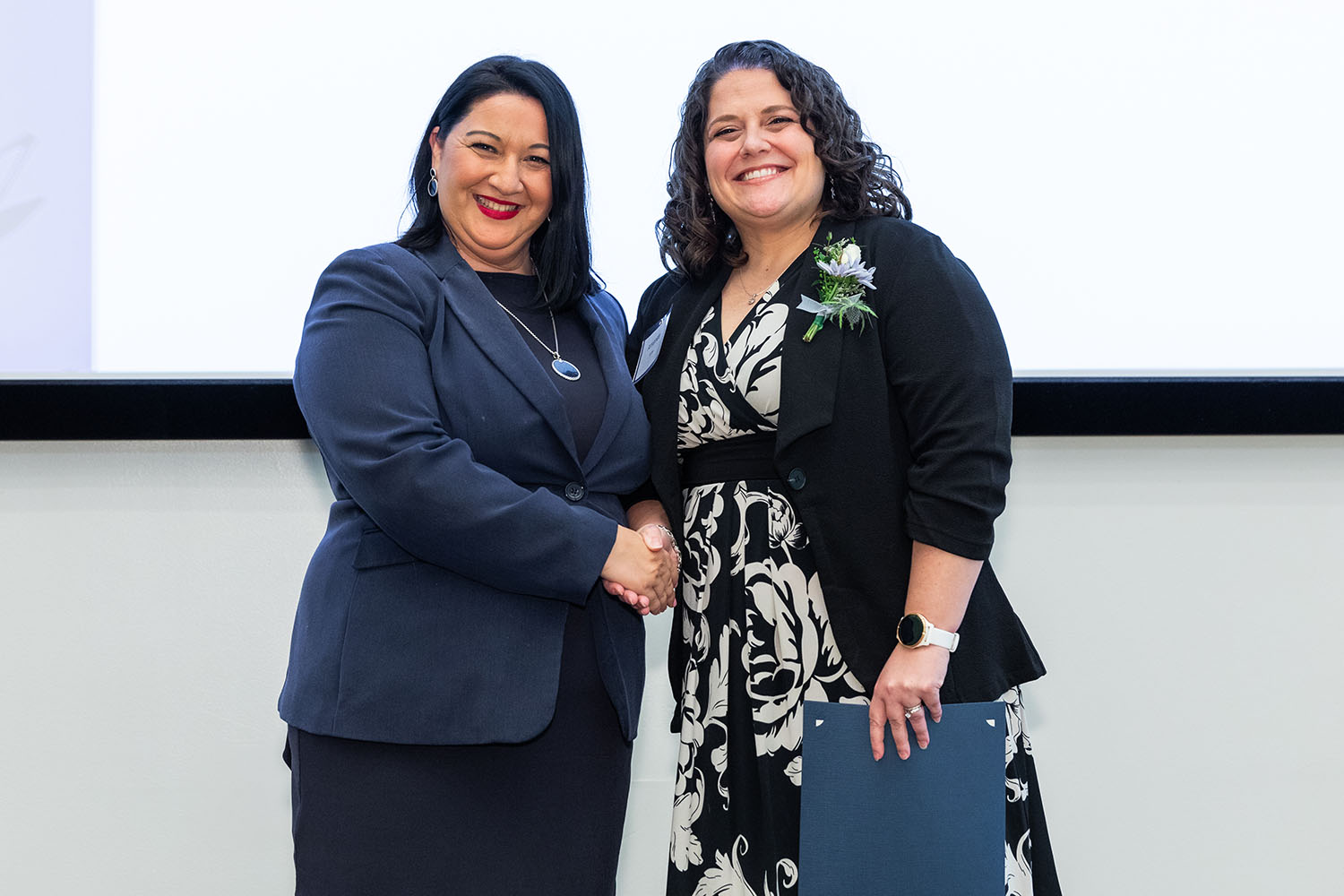Adam Rainear ’16 MA is a doctoral candidate in the Department of Communication in the College of Liberal Arts and Sciences with an undergraduate degree in meteorology who served as a research assistant in the Office of the New Jersey State Climatologist. He also completed meteorology internships at the News 12 Networks and at CBS 3 in Philadelphia and NBC 40 in Southern New Jersey. He is a co-author of the study “What’s in a #Name? An Experimental Study Examining Perceived Credibility and Impact of Winter Storm Names,” with Kenneth A. Lachlan, professor and head of the Department of Communication, and Carolyn Lin, professor of communication, published recently in Weather, Climate, and Society, a peer reviewed journal of the American Meteorological Society. He discussed the study with UConn Today.
Q: The naming of winter storms is relatively new – it began in 2012 – but is now common. How did this attract your interest?
A: The Weather Channel started it after the October 2011 snowstorm that was very impactful here in New England and in New Jersey, where I was at the time. There had been some debate in the meteorology community at conferences and in research talk about if a [for profit] media organization should be doing something like this rather than the official government organization, the National Weather Service, or NOAA – the National Oceanic and Atmospheric Administration. The argument seemed to arise whether it was a marketing ploy or a gimmick rather than serving a larger purpose in the meteorological community. I started to hear these debates and infighting at conferences, and it really got me thinking that we have no data or research on the topic. I decided one of my goals in graduate school would be to conduct a study that examined this.
Q: Most people know tropical storms, such as hurricanes, have names. What was the purpose, and does it correlate to winter storms?
A: One of the main purposes when they started to name tropical storms was to relay information about ships. The system they were using – so many degrees north and so many degrees west – is familiar to people on a boat, but it’s not an easy way to communicate information to the public. Naming the storm would make it easier to track, and they came up with the idea of using humanistic names. The protocol for naming tropical storms was solidified in 1954. The most obvious use for naming winter storms is social media, such as Twitter, with a hashtag. Without a name, if there were multiple winter storms going on you might also need other information, like the location or more specific key words, to search for or communicate information about a winter storm.
Q: There are criteria for hurricane categorization (1-5) and for naming tropical storms, using the Integrated Meteorological Population and Area Calculation Tool, known as IMPACT. Can you explain what this is, and what the criteria are to name a winter storm?
A: The Weather Channel relies on two main things; they draw from the National Weather Service watches and warnings and they rely on an area to receive a winter storm warning that is impacting a certain level of population. The criterion is that the storm affects 2 million people over an area of 400,000 square kilometers, or 248,548 square miles. If the storm is large enough and enough people are within the storm warning range, it would get a name. One of the conversations we’ve had in the meteorological community is what constitutes impactful? There’s more likely to be an impactful storm in an area like the Northeast, where people are crammed into one location, versus North Dakota, where it’s way less populous across a smaller region. You have these differences in various areas of the country, and I believe that is why The Weather Channel relied on National Weather Service warnings. The National Weather Service has different criteria across the country depending on what a region is used to; it’s why The Weather Channel relies and defaults toward the National Weather Service warnings, rather than just naming a storm on their own. An argument can also be made that we don’t have categories for winter storms, like we do for a hurricane or tropical storm, where we hit this point and need to have a name. That’s a conversation we’re having in the field as well.
Q: There was a debate between using common names versus unusual names for winter storms. What was the issue?
A: One of my larger questions was: would be there any differences between naming and not using names but the level of names? We saw after Winter Storm Nemo in 2013 that a lot of the discussion online about this pretty impactful winter storm was very satirical, funny, and humorous because everybody wanted to associate the images and maps they saw online with Nemo the fish from the Disney movie “Finding Nemo,” rather than with a serious storm. That begged the question to me, is a name going to be a distraction? Are we going to associate certain common names with worse weather because the storms that bore those names were some of the most destructive storms on the planet? All of these questions arose when I started to explore the naming process. The Weather Channel did the naming with good intentions. A high school in Bozeman, Montana, would submit a list of mythological names to The Weather Channel each year. They would refine the list to make sure they were appropriate and would be feasible for a hashtag. In my study, I used the name Zelos, the Greek god of rivalry and envy, which hadn’t been used by The Weather Channel in the prior winter. The first question I had was not only is there a difference between naming and not naming, but is there a difference between using a name we hear every day – like Bill or Andrew – versus an obscure or humorous name. In our study, we didn’t find any differences, which is interesting in itself. This year, the Weather Channel is planning to use popular baby names from 2016 to name winter storms in 2017-18, which goes more along the lines for naming tropical systems and hurricanes.
Q: You also raise the question of whether the credibility of the source of weather information affects how a person perceives a personal threat because of the weather. What did you learn?
A: A lot of the anecdotal comments by meteorologists about the practice The Weather Channel follows is that it’s a marketing ploy or a gimmick to try and draw viewers. We didn’t have any data to suggest that, nor did The Weather Channel have evidence that naming was drawing more people to their coverage. Because there wasn’t any such previous study, we wanted to investigate dependent variables that would be useful to the larger field. We’ve seen credibility studies across scientists, meteorologists, and health information produce a variety of results. We thought that if people are making parodies and joking about the names used for winter storms, it might lead a general audience to view The Weather Channel as a less credible source. It’s not an unreasonable assumption. But interestingly, we didn’t find any difference across credibility, no matter what name the storm had or if it had no name – at least not in this study. It’s something we should investigate further, but it begs another question: How would the situation change if the government took over the practice of naming storms, instead of the media organization? Would the credibility of weather information then fluctuate among certain demographics, because certain demographics have higher or lower trust in government?
Q: Where do you go next with exploring this area further?
A: The next avenue to explore is new technology. Maybe we need to have people in the field or in a lab experiment actively seek out information about some weather event using one of these names, just to see if there is any practical utility in information-seeking from a technological standpoint. If being able to type in #bill in the Twitter or Facebook search bar is more useful for the public to find information about the weather, then we should consider investigating this going forward. That might be a more important question than measuring the outcomes regarding specific storms. There are many other situational factors that influence your perceptions about a weather event. For example, the mere fact that I have something to do this weekend rather than staying home could influence my perceptions about how severe I think the winter storm is. If it’s ruining your plans, your perceptions of the storm are thrown off already. Understanding how people are actively seeking out information and acquiring it would be the next step. If we’re finding the naming practice highly useful, maybe there should uniformity in using these names. If we’re finding that the practice doesn’t help, maybe it is a marketing ploy or gimmick. That’s the next question we need to answer.



